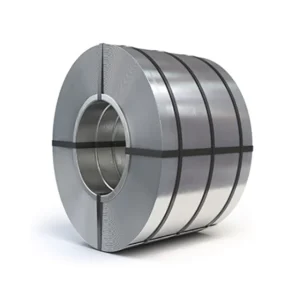Understanding Cold Rolled Grain Oriented Steel: Properties, Applications, and Performance Benefits
As power infrastructure modernizes and the global push for energy efficiency accelerates, material selection for electrical components has become more strategic than ever. Among these materials, cold rolled grain oriented steel plays a critical role in shaping the energy performance and durability of key electrical devices such as transformers and reactors. Its unique magnetic properties make it indispensable to efficient power transmission and distribution.
This article provides a detailed technical overview of cold rolled grain oriented steel—exploring its production process, microstructure, performance characteristics, and engineering applications. It is designed to help manufacturers, electrical engineers, and energy infrastructure planners understand why this specialized steel continues to be the backbone of modern transformer technology.
What Is Cold Rolled Grain Oriented Steel?
Cold rolled grain oriented steel (commonly abbreviated as CRGO steel) is a silicon steel that has undergone a cold rolling process followed by precise heat treatment to align the crystallographic grain structure in the direction of rolling. This grain orientation significantly reduces core losses when the steel is magnetized in the rolling direction, enhancing its performance in static electromagnetic applications.
The typical composition of cold rolled grain oriented steel includes approximately 2.5%–3.5% silicon and very low carbon content. This results in:
- High magnetic permeability
- Low coercivity
- Reduced hysteresis loss
- Excellent surface insulation resistance
These properties make cold rolled grain oriented steel ideal for power transformer cores, where directional magnetic flux is required with minimal energy loss.
Manufacturing Process of Cold Rolled Grain Oriented Steel
The production of cold rolled grain oriented steel is a multi-step, precision-driven process that includes:
- Hot Rolling
The initial steel slab is hot-rolled to a desired thickness and then pickled to remove scale. - Cold Rolling
The material is further reduced in thickness via cold rolling. This step increases strength and refines grain structure. - Decarburization Annealing
The steel is heat-treated in a controlled atmosphere to reduce carbon content, enhancing magnetic properties. - Secondary Recrystallization
A critical step that promotes the growth of Goss texture—a grain orientation {110}<001>—responsible for the steel’s directional magnetic behavior. - Coating
An insulating coating is applied to the surface to enhance electrical resistance between laminations and reduce eddy current losses. - Final Annealing
The material is subjected to a high-temperature treatment to develop optimal magnetic properties.
Each phase is tightly controlled to ensure the steel meets strict specifications for magnetic performance, thickness uniformity, and surface quality.
Key Properties of Cold Rolled Grain Oriented Steel
The defining properties of cold rolled grain oriented steel include:
- Magnetic Flux Density (B): High saturation flux density up to 1.9–2.0 Tesla
- Core Loss (W/kg): Very low at 1.7 Tesla and 50 Hz, ideal for energy efficiency
- Coercivity (Hc): Low, enabling rapid magnetization and demagnetization
- Thickness: Typically between 0.18 mm and 0.35 mm
- Insulation Coating Resistivity: Critical for reducing eddy currents
These attributes result in a highly stable and efficient material for use in the static magnetic field environment of transformers and reactors.
Applications of Cold Rolled Grain Oriented Steel
Cold rolled grain oriented steel is engineered for electromagnetic components that operate under constant or quasi-constant magnetic fields. Key applications include:
- Power Transformers
The most common use, where laminated CRGO cores help reduce core losses and maintain thermal stability under load. - Distribution Transformers
Used in urban and rural power distribution networks, benefiting from the compactness and high efficiency of CRGO cores. - Current Transformers and Instrument Transformers
Where precision in magnetic performance is critical for measurement accuracy. - Shunt Reactors and Power Inductors
CRGO steel ensures minimal energy waste and high reliability in AC filtering and power stabilization. - High-Efficiency Magnetic Components
Used in static converters and power inverters, especially in renewable energy and HVDC systems.
Because of its directional magnetic properties, cold rolled grain oriented steel is less suited for rotating machines like motors, where non-grain-oriented (NGO) steels are preferred.
Benefits of Cold Rolled Grain Oriented Steel
The use of cold rolled grain oriented steel provides a range of technical and economic benefits in electrical system design:
- Energy Efficiency
Reduced core losses directly translate into lower operational costs and energy waste. - Compact Design
High magnetic permeability allows for smaller transformer cores without sacrificing performance. - Thermal Stability
Excellent heat resistance supports long-term reliability in demanding applications. - Low Noise Operation
Reduced magnetostriction results in quieter transformer operation. - Environmental Performance
CRGO steel is fully recyclable and compatible with eco-efficient design strategies.
These advantages make CRGO steel a critical material in meeting today’s sustainability and performance benchmarks in the energy sector.
Industry Standards and Grades
Cold rolled grain oriented steel is available in multiple international standard grades, including:
- EN 10107 (Europe)
- JIS C2552 (Japan)
- ASTM A876 / A343 (USA)
- IEC 60404 (International)
Grades are categorized based on core loss at standardized magnetic flux density levels (e.g., M3, M5, M6). Higher-grade CRGO materials (e.g., Hi-B or laser-scribed) offer even lower losses and are often used in high-voltage or compact designs.
Role in Sustainable Energy Systems
As the world transitions to low-carbon energy systems, cold rolled grain oriented steel is more relevant than ever. It enables the development of:
- High-efficiency grid transformers
- Renewable energy substations
- Smart grid infrastructure
- HVDC transmission systems
Its performance under high voltage, temperature, and frequency fluctuations makes it ideal for supporting energy systems that must operate continuously and efficiently over decades.
Cold Rolled Grain Oriented Steel vs. Non-Grain Oriented Steel
| Feature | CRGO Steel | NGO Steel |
|---|---|---|
| Grain Structure | Aligned | Random |
| Core Loss | Low (directional) | Moderate (non-directional) |
| Applications | Transformers, reactors | Motors, generators |
| Frequency Suitability | Low (50–60 Hz) | Higher frequencies |
| Cost | Higher | Lower |
This distinction ensures that engineers choose the right material based on the magnetic environment and application type.
Conclusion
Cold rolled grain oriented steel is a fundamental enabler of efficient and resilient electrical infrastructure. Its precise grain alignment, low core loss, and stable magnetic properties make it the material of choice for transformers and other static electromagnetic devices. As power grids expand and efficiency demands increase, CRGO steel will continue to play a pivotal role in shaping tomorrow’s energy landscape.
For manufacturers, electrical engineers, and policy-makers alike, understanding the properties and applications of cold rolled grain oriented steel is essential to advancing sustainable and high-performance power systems—especially in regions like Europe and the Middle East where energy security and decarbonization are national priorities.




